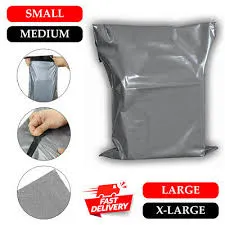Eco-Friendly Seed Paper Packaging for Sustainable Gardening and Gifting Solutions
Plantable Seed Paper Packaging A Sustainable Alternative
In an era where environmental sustainability takes precedence, innovative solutions are emerging to reduce our ecological footprint. One such innovation is plantable seed paper packaging. This unique, eco-friendly product not only serves its primary purpose as a packaging material but also offers an exciting opportunity to contribute to environmental conservation after its use.
What is Plantable Seed Paper?
Plantable seed paper is a biodegradable paper embedded with seeds. When the paper is planted in soil and given the appropriate care, the seeds germinate and grow into plants. This innovative concept marries the idea of recycling with gardening, transforming what would traditionally be discarded into new life. The seeds can vary, including flowers, herbs, and vegetables, allowing consumers to choose the flora that best suits their gardening aspirations.
The Environmental Benefits
The environmental benefits of plantable seed paper packaging are manifold. Firstly, its production significantly reduces waste. Traditional packaging materials, such as plastic and non-biodegradable paper, often end up in landfills, contributing to pollution and waste management issues. In contrast, plantable seed paper packaging decomposes naturally, enriching the soil as it breaks down.
Secondly, using plantable seed paper helps conserve resources. The production of conventional packaging materials often requires significant amounts of water, fossil fuels, and energy. By opting for seed paper, businesses can minimize their overall resource consumption, promoting a more sustainable approach to packaging.
Additionally, once the seed paper is planted, it goes beyond mere decomposition. The seeds grow into plants that can absorb carbon dioxide, purify the air, and foster biodiversity. By incorporating plantable packaging, consumers can take an active role in combating climate change and supporting local ecosystems.
An Innovative Marketing Tool
plantable seed paper packaging

Beyond its environmental benefits, plantable seed paper packaging presents a unique marketing opportunity for businesses. As consumers become increasingly environmentally conscious, companies can differentiate themselves through sustainable practices. By using plantable packaging, brands can demonstrate their commitment to sustainability, appealing to eco-minded consumers.
Moreover, plantable seed paper packaging is highly customizable. Businesses can design creative packaging that reflects their brand identity while also providing consumers with a fun, interactive experience. When customers receive a product wrapped in attractive seed paper, they are more likely to remember the brand and share their experience with others, enhancing brand loyalty and awareness.
Educational Value
Plantable seed paper also serves an educational purpose. It encourages customers, especially children, to engage in gardening and learn about plant life cycles. Companies can include instructional material with the packaging, making it an excellent tool for teaching sustainability and the importance of nature. Educating consumers on how to grow the seeds reinforces the connection between the product and its environmental impact.
Challenges and Considerations
Despite its numerous advantages, the adoption of plantable seed paper packaging is not without challenges. The initial costs may be higher compared to traditional packaging materials, which could deter small businesses. Additionally, the effectiveness of seed germination can depend on several factors, including climate and the type of seeds used. Businesses must ensure they are using high-quality seeds and providing suitable instructions for planting.
Conclusion
In conclusion, plantable seed paper packaging represents a pioneering step towards sustainable practices in the packaging industry. By transforming waste into growth, it exemplifies how innovation can benefit both businesses and the environment. As consumers continue to seek out eco-friendly products, plantable seed paper packaging will likely gain popularity, paving the way for a greener future. Embracing such sustainable practices not only helps combat climate change but also fosters a deeper connection between individuals and the natural world around them. It is time for businesses and consumers alike to consider the roots of sustainability—planting today for a flourishing tomorrow.
-
Stretch Film Solutions: A Comprehensive GuideNewsJun.03,2025
-
Stretch and Shrink Packaging SolutionsNewsJun.03,2025
-
Revolutionizing Packaging with Modern Wrapping SolutionsNewsJun.03,2025
-
Innovative Solutions for Silage and Window TintingNewsJun.03,2025
-
Efficient Packing with Stretch Wrap SolutionsNewsJun.03,2025
-
Effective Packaging with Stretch Wrap SolutionsNewsJun.03,2025
-
Have the freedom of customizing your custom mailers any way you want! Our dedicated packaging support will help deliver you the mailing experience you need to elevate your shipping experience to the next level! Start making a strong impression on your customers and stand out from your competitors! -
LIYA uses high quality raw materials which directly purchased from large enterprises domestic and overseas such as PetroChina, Sinopec, Sabic, Equate, ExxonMobil, Dow Chemical, Total, and Borouge, ensuring the price advantage and quality of the raw materials. -
LIYA uses high quality raw materials which directly purchased from large enterprises domestic and overseas such as PetroChina, Sinopec, Sabic, Equate, ExxonMobil, Dow Chemical, Total, and Borouge, ensuring the price advantage and quality of the raw materials.





